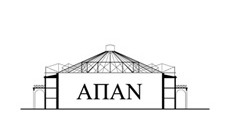Παπαδόπουλος, Μάδυτος (1890)
[Bibliography]
Χρυσόστομος Α. Παπαδόπουλος, Μάδυτος. Η πόλις της Χερρονήσου. Πατριδογραφία (Εκ του τυπογραφείου των καταστημάτων Ανέστη Κωνσταντινίδου, Αθήνα 1890)
Chrysostomos Papadopoulos, Madytos, the City in the Cherronesus; Patridography [writing about the homeland] (1890, in Greek). And indeed the young student, as he was in 1890 the man who became in 1923 Archbishop of Athens and Primate of the Church of Greece (born in Madytos, or with its Ottoman name Maydos / modern Eceabat, a port-town of the Dardanelles in the Gallipoli Peninsula of Eastern Thrace, in 1868), made an attempt to combine every possible source in order to write about his motherland. Thus he gave us the first historiography of Madytos, a small city which was founded by Aioleans (Greeks of the N-NE Aegean) during the colonization of the Thracian Peninsula / Gallipoli Peninsula and remained Greek, whiting the Ottoman Empire, until the autumn of 1922.
The narration follows the usual structure of a ‘patridographia’, a sort of historiography which was greatly appreciated in the past. Starting with the written sources, ancient Greek and Byzantine, and the few archaeological remains (inscriptions etc., most of them kept in the churches) Chrysostomos is trying to connect local history with the wider frame (Chapters I-IV pp. 7-29). Then, he describes in what way the Greek Orthodox Community was organized and administrated in his days; he speaks about the Council of the Elders, the Church authorities, the schools that were kept by the Community (Chapters V-IIV pp. 30-45). In Chapter VIII (pp. 45-52) we learn about the landscape and the geographical characteristics of the area, a subject which continues in Chapters IX-X (pp. 52-70) with much more details about local products, professions (mainly sailors and fishermen), everyday life and finally some of the wedding traditions, as well as the three day and night feast in late August.
But this is not all. The young student ends his first book with a list of those who bought one or more copies of Madytos in advance (pp. 71-78). Dozens of names are mentioned; they are divided according to the place of their residence: 23 among them are leaving in Alexandria, 2 in Marseilles, and 21 in a village on the Asian coast of the Dardanelles, others in Jerusalem or in the island of Lesvos. Next to each name their place of origin is given. Thus, you have a sort of a map of the Greek diaspora in 1890. The most impressive part of this list is formed by the names of the school girls from the Zappeion Lyceum in Constantinople / Istanbul. Although, for us, it would be almost impossible to try to understand why a teenager of the late 19th c. prepays for such a book, there are fifty girls in the list.
You can find this rare edition attached here (in pdf). Please go to TEXTS and look for: Papadopoulos, Madytos (1890) the book
See also BIOGRAPHIES: Chrysostomos I (Papadopoulos) of Athens

